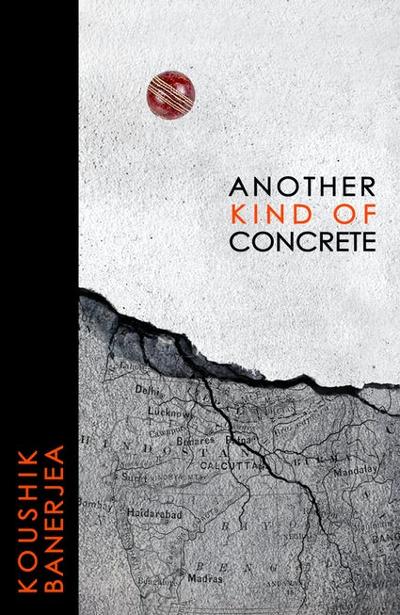
Another Kind of Concrete, Koushik Banerjea (£8.99, Jacaranda)
Finally, we get a version of 1970s London told from something other than a white perspective. East and West London feature in this gritty but humorous novel, as does India and what became Pakistan as a result of Partition.
Split into five sections, with much time jumping and changes of focus within each, we get to meet K. and his family as he navigates poverty, school, friendships, music and racism; just as his family and friends have in their own ways.
1977 is the chronological focus of the book, and London is awash not only with the National Front but copycat skinheads and troublemakers, as well as the mutterings of Londoners who resent Pakistani, Jamaican and Indian incomers to ‘their country’ and way of life.
K. seeks refuge in books, friendship and to a lesser extent music, and seems somewhat unaware of his uncle and father’s back stories and his mother’s desire to see him educated and enabled. But we are privy to several family’s histories: and how they survived on the streets of India, worked in the London docks, and earlier flirtations with alternative hippy culture and other music after settling in London.
Banerjea is careful to stay away from an easy depiction of goodies and baddies in his book, recognising that people are more complex than that, and cannot be reduced to black and white. This book’s characters are nuanced and occasionally join sides or football games that aren’t expected by the reader. K.’s confidante and girl friend Michelle spends time with the popular and aloof girls at school, the runt at school is not simply an NF stooge, fights and attacks are sometimes provoked. Even the smelly ‘spastic’ girl at school who wets herself in class provides a surprising escape route from an incident of sexual abuse.
The long summers of the mid-70s with their simmering discontent and political unrest are well-depicted here through the story lines. This is no political rant, nor is it a liberal nostalgia trip. Punk is sidelined here (and there is no mention of Rock Against Racism), moments of hope mostly come from everyday shopkeepers or neighbours who offer support or speak out against the prevalent racism and violence; cricket and music offer survival strategies in the playground and street, even as rioting and death occur.
This book isn’t perfect, it is sometimes confusing and elliptical, and a good editor would have insisted on some cutting and re-ordering to produce a clearer story, but in the main this is a fantastic novel, told in an original, informed and persuasive voice. Banerjea has previous in academic postcolonial theory, and it’s great to see him turning that knowledge into an accomplished, lively and timely novel.
Rupert Loydell
A moment with author Koushik Banerjea reading from his new book.

Insightful review. Totally agree that this is a fantastic novel. Just a small observation – large parts of the novel take place in south London – in fact, from the opening paragraphs, we’re transported straight into 1970s Lewisham. Found the book to be wildly evocative of people and places that I haven’t personally experienced. Really loved the way that language was used – it was quite beautiful, even if, as the reviewer notes, the story itself is quite gritty. Not sure I agree with the reviewer’s comment about ‘even’ the ‘smelly…girl’ – she’s actually a key figure in this story and why should she be sidelined or ignored? It’s one of the book’s many strengths that it resolutely refutes *all* stereotypes. A superb debut.
Comment by Nicole on 25 July, 2020 at 10:26 amSorry I missed Lewisham… I found working out where I was in the book difficult at times, despite growing up in London. I don’t regard the ‘smelly girl’ pivotal, in fact I could have critiqued the fact she was kind of really only there for one moment in the story. But glad you liked the book too and found the review insightful – you’re very kind.
Comment by Rupert on 25 July, 2020 at 11:21 amNot kind at all! It’s always good to read a thoughtful review. As for missing Lewisham, no apology needed – it’s probably not easy to remember or fit everything into one article. Regarding the RH character, I found her to be as impactful, on me as a reader, a presence as any of the other kids at the school. Separately from the ‘pivotal’ scene you mention, there was a chapter where we got to hear some of her own story, thought processes, struggles and ambitions, bringing her to life as a ‘real’ character with as much relevance as anyone else. I think it’s because the (erroneous and bigoted) assumption is often, in fiction and in real life, that kids like RH are, at best, an irrelevance and, at worst, far worse – so it was refreshing to see her character given depth and space on the pages, and treated with respect.
Comment by Nicole on 26 July, 2020 at 9:57 am